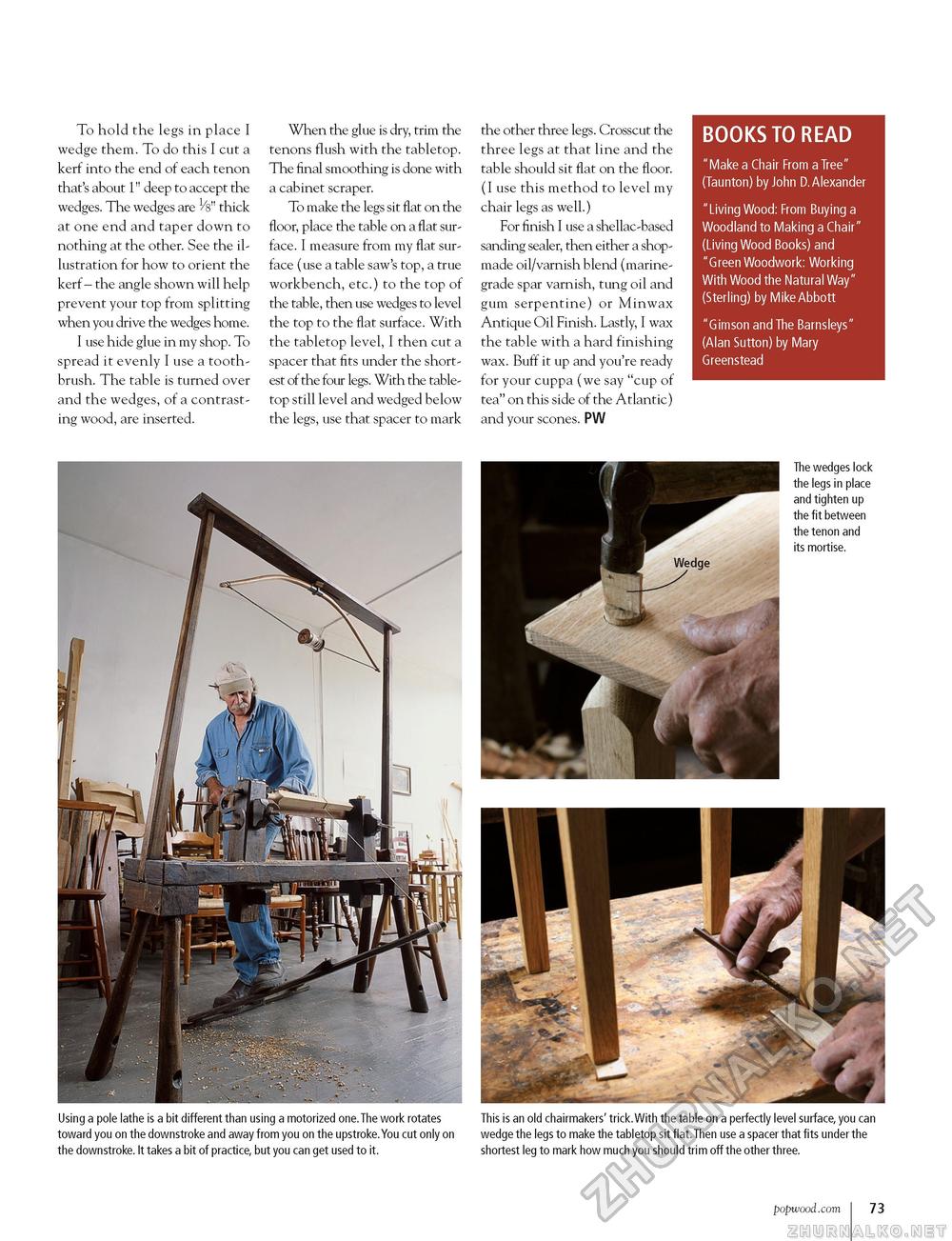Popular Woodworking 2004-04 № 140, страница 75
BOOKS TO READ "Make a Chair From a Tree" (Taunton) by John D.Alexander "Living Wood: From Buying a Woodland to Making a Chair" (Living Wood Books) and "Green Woodwork: Working With Wood the Natural Way" (Sterling) by Mike Abbott "Gimson and The Barnsleys" (Alan Sutton) by Mary Greenstead To hold the legs in place I wedge them. To do this I cut a kerf into the end of each tenon that's about 1" deep to accept the wedges. The wedges are Mi" thick at one end and taper down to nothing at the other. See the illustration for how to orient the kerf - the angle shown will help prevent your top from splitting when you drive the wedges home. I use hide glue in my shop. To spread it evenly I use a toothbrush. The table is turned over and the wedges, of a contrasting wood, are inserted. When the glue is dry, trim the tenons flush with the tabletop. The final smoothing is done with a cabinet scraper. To make the legs sit flat on the floor, place the table on a flat surface. I measure from my flat surface (use a table saw's top, a true workbench, etc.) to the top of the table, then use wedges to level the top to the flat surface. With the tabletop level, I then cut a spacer that fits under the shortest of the four legs. With the table-top still level and wedged below the legs, use that spacer to mark the other three legs. Crosscut the three legs at that line and the table should sit flat on the floor. (I use this method to level my chair legs as well.) For finish I use a shellac-based sanding sealer, then either a shop-made oil/varnish blend (marine-grade spar varnish, tung oil and gum serpentine) or Minwax Antique Oil Finish. Lastly, I wax the table with a hard finishing wax. Buff it up and you're ready for your cuppa (we say "cup of tea" on this side of the Atlantic) and your scones. PW Using a pole lathe is a bit different than using a motorized one.The work rotates This is an old chairmakers' trick.With the table on a perfectly level surface, you can toward you on the downstroke and away from you on the upstroke.You cut only on wedge the legs to make the tabletop sit flat.Then use a spacer that fits under the the downstroke. It takes a bit of practice, but you can get used to it. shortest leg to mark how much you should trim off the other three. popwood.com 73 |








